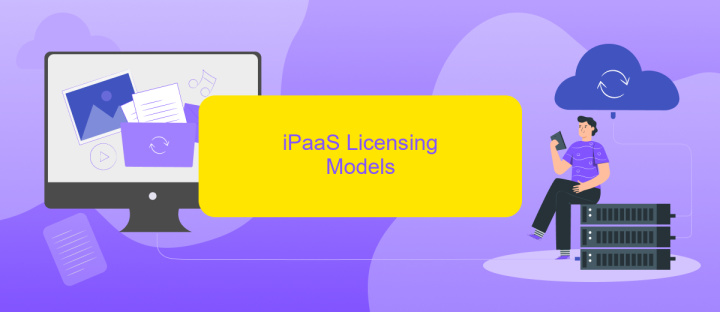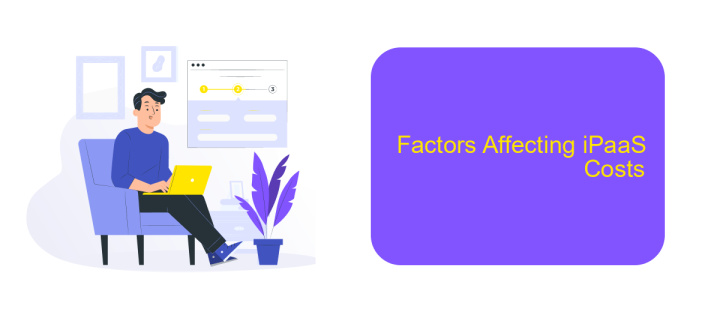iPaaS Cost
In today's rapidly evolving digital landscape, Integration Platform as a Service (iPaaS) solutions have become essential for businesses seeking seamless connectivity between diverse applications and data sources. However, understanding the costs associated with iPaaS is crucial for making informed decisions. This article explores the various factors that influence iPaaS pricing, helping organizations budget effectively while maximizing their technological investments.
Introduction
In the rapidly evolving digital landscape, businesses are increasingly relying on Integration Platform as a Service (iPaaS) solutions to streamline their operations and enhance connectivity between disparate systems. As organizations grow, the need for efficient data integration becomes paramount, driving the demand for cost-effective iPaaS solutions that offer robust features and scalability.
- Cost efficiency: iPaaS solutions like ApiX-Drive provide affordable integration options, reducing the need for expensive custom development.
- Scalability: These platforms support growing business needs by allowing seamless integration of additional services and applications.
- User-friendly: With intuitive interfaces, iPaaS solutions enable even non-technical users to set up and manage integrations effortlessly.
Understanding the cost implications of iPaaS is crucial for businesses aiming to optimize their IT budgets while maintaining high performance. By leveraging platforms like ApiX-Drive, companies can achieve significant cost savings and operational efficiencies, ensuring smooth and effective integration processes without compromising on quality.
How to Calculate iPaaS Costs

Calculating iPaaS costs involves several steps. First, identify the specific integration needs of your business, such as the number of applications to be integrated and the complexity of these integrations. Next, consider the pricing models of various iPaaS providers, which can include subscription fees, pay-per-use charges, or a combination of both. It's essential to factor in the costs of initial setup, ongoing maintenance, and any additional features or services that might be required.
To streamline the process, you can use services like ApiX-Drive, which offer transparent pricing and a user-friendly interface for setting up integrations. ApiX-Drive allows you to connect various applications without extensive coding, thereby reducing both time and costs. By leveraging such tools, you can get a clearer picture of the total cost of ownership and ensure that your iPaaS solution aligns with your budget and operational needs.
iPaaS Licensing Models

Understanding the licensing models for iPaaS (Integration Platform as a Service) is crucial for businesses looking to optimize their integration strategies. These models can vary significantly, offering different levels of flexibility, scalability, and cost-effectiveness. Choosing the right licensing model can greatly impact the efficiency and cost management of your integration processes.
- Subscription-Based Licensing: This model involves paying a recurring fee, typically monthly or annually, for access to the iPaaS platform. It is ideal for businesses that need predictable costs and scalable resources.
- Usage-Based Licensing: In this model, costs are determined by the actual usage of the platform, such as the number of integrations or volume of data processed. This can be beneficial for businesses with fluctuating integration needs.
- Perpetual Licensing: A one-time payment grants indefinite access to the iPaaS platform. While it requires a larger upfront investment, it can be cost-effective in the long run for companies with stable integration requirements.
For instance, ApiX-Drive offers a subscription-based licensing model that includes various pricing tiers to suit different business needs. This flexibility allows companies to scale their integration efforts without incurring unnecessary costs. By understanding these licensing models, businesses can make informed decisions that align with their operational and financial goals.
Factors Affecting iPaaS Costs

The cost of using an Integration Platform as a Service (iPaaS) can vary widely depending on several factors. One of the primary considerations is the scale of integration required, including the number of applications and data sources that need to be connected. Larger enterprises typically face higher costs due to the complexity and volume of their integration needs.
Another significant factor is the level of customization and specific features required. Some businesses may need advanced functionalities, such as real-time data synchronization or complex workflow automation, which can increase the overall cost. Additionally, the frequency of data transfers and the volume of data processed can also impact pricing.
- Number of integrations and connected applications
- Level of customization and advanced features
- Frequency and volume of data transfers
- Subscription plan and payment model
- Support and maintenance services
Services like ApiX-Drive can help manage these costs by offering flexible pricing plans tailored to different business needs. By automating numerous integration tasks and providing a user-friendly interface, ApiX-Drive can reduce the time and resources required for managing integrations, ultimately lowering the overall iPaaS expenses.
Strategies for Optimizing iPaaS Costs
Optimizing iPaaS costs requires a strategic approach to ensure that your organization is getting the best value for its investment. One effective strategy is to regularly review and assess your usage patterns. By identifying underutilized or redundant services, you can eliminate unnecessary expenses. Additionally, consider implementing usage caps and monitoring tools to prevent unexpected cost spikes. These steps can help maintain control over your budget while maximizing the efficiency of your iPaaS solutions.
Another key strategy is to leverage automation and integration tools like ApiX-Drive. This platform allows you to seamlessly connect various applications and automate workflows, reducing manual efforts and operational costs. By using ApiX-Drive, you can streamline processes and improve data accuracy, leading to more efficient resource allocation. Moreover, exploring volume-based pricing models or long-term contracts with your iPaaS provider can offer significant cost savings. Regularly negotiating with vendors and staying informed about new features and pricing plans will ensure that you are always optimizing your iPaaS expenditures.
- Automate the work of an online store or landing
- Empower through integration
- Don't spend money on programmers and integrators
- Save time by automating routine tasks
FAQ
What is iPaaS?
How much does iPaaS typically cost?
Are there any hidden costs associated with iPaaS?
Can I try iPaaS before committing to a subscription?
How do I know if iPaaS is cost-effective for my business?
Strive to take your business to the next level, achieve your goals faster and more efficiently? Apix-Drive is your reliable assistant for these tasks. An online service and application connector will help you automate key business processes and get rid of the routine. You and your employees will free up time for important core tasks. Try Apix-Drive features for free to see the effectiveness of the online connector for yourself.


